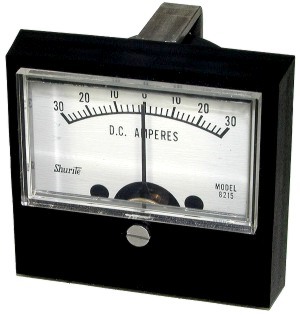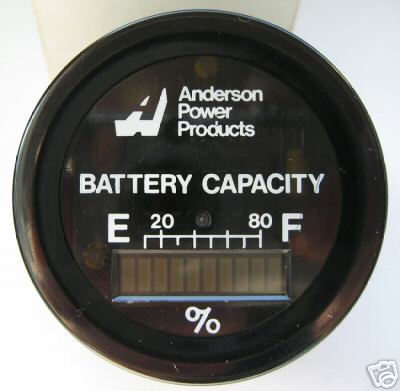I know the main idea is to convert kinetic energy into potential energy but I am wondering what effect it has on stopping the bike? The turnkey bikes that I can buy suffer from heaving grossly inadequate braking. I am wondering if I can swap the controller - or convert it - to one that does regenerative braking, will that contribute to the stopping capability of the bike?
Who's online
There are currently 0 users online.
Who's new
- eric01
- Norberto
- sarim
- Edd
- OlaOst



`
I have it on my Luyuan, and it has no effect on the stopping at all. BTW I just adjusted my front this morning, yesterday coming down a hill were cars exit from the Interstate, I couldn't stop all all.
I have Front brake Cantilever brakes on the front and EABS (electric absorption braking system) on the rear. In my opinion they are not the best style of brakes.
Peace Out,
Gman
Now that we have clarified our beliefs, your invited to join us as we begin building on them to define our Community Mission Statement
Peace Out, <img src="http://tinyurl.com/ysafbn">
Gman
Have couple Lepton-E scooters , the regen. in the normal mode is very effective braking , when in the rabbit mode ( high speed ) the braking is even better, I very seldom use brakes , mostly when I have to stop in a emergency , (Less than 10% of the time).
Have measured with a current probe on the batteries lead and found current in excess 30 amp going in when going down a step hill , this regen really work ! !.
Andre
HEAT & LOSS & INEFFICIENCY RELATED DIRECTLY to IMPEDANCE
I cannot imagine NOT to have regen on my Tidal Force bike. It slows down bike like a wonder. Think about it - wet rims , how do you brake 29kg bike on friction - very scare, very dangerous.
Rege is tremendous help
Just touch of left brake engages regen - this is beauty of this, no friction, just electromagnetic field slows you down. On steep down slope just merly touch of lever slows you down.
MC
CM
I use regenerative braking on my Zappy. Without it, the brakes (even the upgraded ones) will fade on a long hill. With regen, I barely need to use the friction brakes.
It is difficult to find a brushless controller with regen, though. Most that have this feature are very expensive. It may be possible to add an external braking controller to an existing system. I designed one setup that uses a 3 phase bridge rectifier and a cheap brushed controller to implement regen on a brushless system. It has not been tested, so I cannot verify that it will work, but I don't see why it wouldn't.
The throttle input on the regen controller must never reach 100%, but in practice, I don't think you would want to generate that much braking force anyway.
You would also need some provision to prevent the braking controller from coming on at the same time as the main controller, since this would result in a short circuit and destruct one of the controllers. A fuse in the regen circuit would be a good idea too.
` :jawdrop:
As I said, I finally adjusted the front brake today, and it did stop ok at the same location coming off the incline were it didn't stop yesterday in time. Actually they were never adjusted correctly in over three years, it just took me getting scared, to get me to finally adjust them,
Peace Out,
Gman
Now that we have clarified our beliefs, your invited to join us as we begin building on them to define our Community Mission Statement
Peace Out, <img src="http://tinyurl.com/ysafbn">
Gman
I have regen on my BionX and it helps a little in dry weather and quite a lot in wet weather. I'm not sure I'd go to the trouble to add it to a bike that didn't have it, but I sure like it on the BionX. This being said there is no substitute for having adequte brakes on the bike. In a quick stop or emergency stop the regen really isn't going to help all that much. Brakes are the easiest thing in the world to upgrade. My local bike shop sold me the parts for about $30.
--
Full time ebiker
BionX and Wilderness Energy
"we must be the change we wish to see in the world"
Yes,
in emergency maybe, regen kicks in with seconds of delay on my TF, but if you realize that merely pressing electrical button slows lets's say 100kg in seconds is amazing and it is future of breaks, just like elctric drive is the future of mass transport.
MC
CM
` ;)
I've had regen for three years, and embarrassed to say I never knew it was also a braking device. I guess we can all learn from what seems like a simple question from a Newbie. Thanks pengyou for asking the question.
Peace Out,
Gman
Now that we have clarified our beliefs, your invited to join us as we begin building on them to define our Community Mission Statement
Peace Out, <img src="http://tinyurl.com/ysafbn">
Gman
Thanks for your responses! So would it be safe to say that if most of my cyling is done on flat land...and not at very high speeds...regen will not significantly help stop the bike?
Also, it seems that regen braking is a function of the controller, not the motor?
`
Peace Out,
Gman
Now that we have clarified our beliefs, your invited to join us as we begin building on them to define our Community Mission Statement
Peace Out, <img src="http://tinyurl.com/ysafbn">
Gman
I don't think regenerative braking sounds like a great idea for bicycles. Scooters are heavier so the following may not apply. I believe you can get more distance by coasting than regenerative braking. Here's why I believe it is better to use the energy of the bike to coast.
In practical terms, regenerative braking on a bicycle may not be very realistic. Regenerative braking is accomplished by using the driving motor as a generator and then feeding that current back into the battery pack through the controller. With modern NiMH or Li-Ion lightweight batteries, the charge current must be limited and complete recharging could require from 4 to 12 hours. Assuming that a battery pack will run your bike for one hour, you would need to coast downhill at least 4 hours to recharge the battery completely. That means that for every minute of run time you would need 4 minutes of coasting time to recapture that energy at 100% efficiency. In every day use, not many of us will be able to ride routes that have 4 times more downhill than level or uphill! To make matters worse, losses in the controller and varying speeds make regeneration less than 100% efficient - typically overall efficiency is on the order of 50-60%.
So let's do the math - For each minute of coasting you would recapture 15 seconds of run time at 100% efficiency or about 7-8 seconds of run time at typical efficiencies. By extending this to a typical e-bike, if you could use regenerative braking for 50% of a one hour ride, you would only recapture about 4 minutes of run time. When was the last time you coasted for half of your trip? To be fair, SLA batteries allow much higher charge rates and may recapture a higher percentage of the regenerative energy however that gain is somewhat offset due to their higher weight.
FWIW,
Chas S.
My Bicycle Pages
`Chas,
I have read something similar on a E Bike vendors site, there reason was similar. A E Bike being much lighter doesn't have the momentum of a heavy E Scooter. While trying to find the site, I ran across this NASA John H. Glenn Research Center report Baseline Testing of the EV Global E-Bike With Asymmetric Ultracapacitors, which concludes
How accurate is your 15% figure?
Peace Out,
Gman
Now that we have clarified our beliefs, your invited to join us as we begin building on them to define our Community Mission Statement
Peace Out, <img src="http://tinyurl.com/ysafbn">
Gman
I agree. I don't think it does a thing for my range. Although, you can't always coast when you like. If this were true brakes would be optional. As long as you are braking anyway might as well get some use out of it. Mind you I'm still not advocating adding regen to a bike that didn't come with it.
There are other uses for regen than stopping. This is just the kick in the pants I need to write a posting I've been meaning to for a while now...
--
Full time ebiker
BionX and Wilderness Energy
"we must be the change we wish to see in the world"
Interesting idea.
I thought one could use some sort of three position switch, and some resistors but perhaps that is for batteries that cant take large charging rates. I guess one could find a way to step up the voltage as well so recharging works to lower speeds for increased gains in stopping and charging.
If the voltage generated drops below the battery voltage + 1.4 volts or so , does braking stop ?
One downside I see with this concept is the motor needs to be turning all the time this probably costs more energy then the gain unless you had some sort of clutch.
`abcd,

Welcome to the V is for Voltage Community.
My regen seems to work as long as I have sufficient power. If the power gets too low, then the scoot doesn't even move fast enough to need brakes. I'm usually trying to find the shortest way back home and don't want to stop to try and conserve the little power I have left. Since I have a Hub Motor, it's really vibrating by that time. Well I learned from my first set of Batteries, now I don't go below 80% before I start heading back home or to a charging location.
I only use it when I'm stopping or slowing down, so the natural momentum is used rather than any extra energy.
I also have a rear band brake, when either front or rear is applied, power is automatically disconnected to the hub motor, so when going down a hill I slightly apply the brakes.
I plan to install a inexpensive ammeter, so that will probably give me more information on what the regen is actually doing.
-30/+30 Amp DC Meter
30 Amp 2-way self-centering DC Ammeter. Built in shunt. Panel mount design with mounting hardware included. Calibration screw on front of meter. Dimensions: 2" wide x 2-1/4" high x 1-5/16" deep. Fits into 2" diameter hole.
Item # MET-30A
Price $9.95
Chas, diagram please.

I'll be also installing the Anderson State of Charge meter - 48V; LED bar display that I showed you.
Peace Out,
Gman
Now that we have clarified our beliefs, your invited to join us as we begin building on them to define our Community Mission Statement
Peace Out, <img src="http://tinyurl.com/ysafbn">
Gman
I think power cutoff and regen should be optional in most controllers. I don't see a lot of use for regenerating electricity while riding (unless you have a large downhill section to ride down) But i know i could really use it as an ebrake.